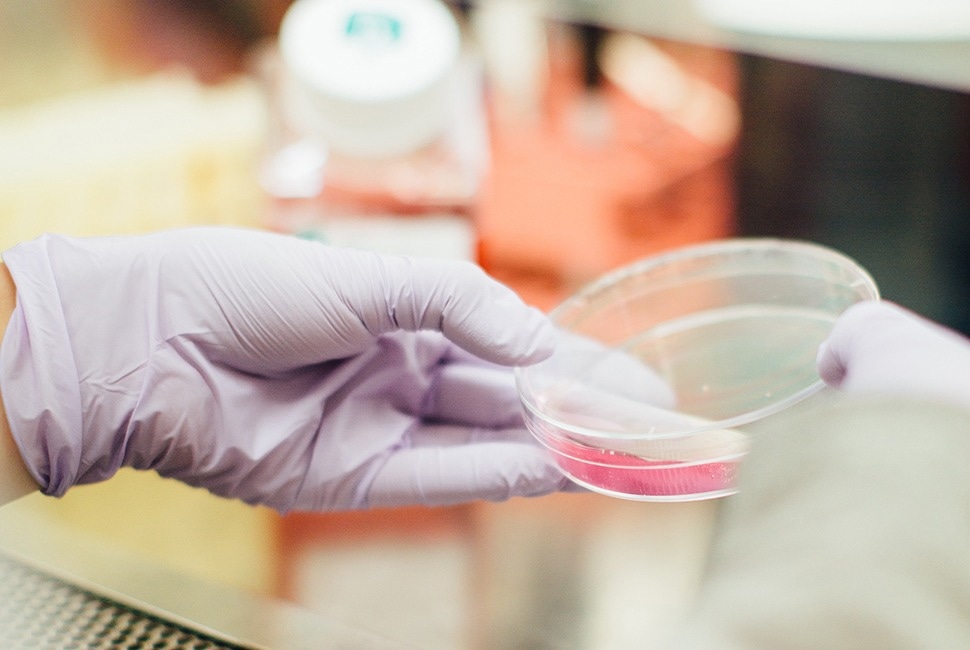A potential immunotherapy method for treating metastatic melanoma is adoptive cell therapy (ACT). The method, which utilizes the use of immune cells extracted from the patient’s own tumors, could offer cancer patients new options for treatment by eschewing radiation therapies and harsh chemotherapy drugs.
 For the first time, Northwestern scientists have discovered it is possible to isolate a tumor’s attack cells non-invasively from blood, rather than from tumors. The finding opens the door to treat harder-to-reach cancer types and makes it a more viable option for hospitals. Image Credit: Northwestern University
For the first time, Northwestern scientists have discovered it is possible to isolate a tumor’s attack cells non-invasively from blood, rather than from tumors. The finding opens the door to treat harder-to-reach cancer types and makes it a more viable option for hospitals. Image Credit: Northwestern University
The attack cells of tumors can now be non-invasively isolated from blood rather than tumors, according to researchers at Northwestern University. The discovery enables ACT to treat cancer types that are more difficult to reach and makes it a more practical treatment option for hospitals.
We started asking questions about whether the immune cells that go into tumors come back out, and if you could find them in the bloodstream. We did not know if we would be able to find them or if we could see enough of them to even study them. Sure enough, they are in the blood. This is the first time these cells have been studied in this context.”
Shana O. Kelley, Study Corresponding Author and Neena B. Schwartz Professor, Chemistry and Biomedical Engineering, Northwestern University
She is also a professor of biochemistry and molecular genetics at Northwestern University Feinberg School of Medicine. She also is president of the Chan Zuckerberg Biohub Chicago.
The study, which was released on April 10th, 2023 in the journal Nature Biomedical Engineering, expands upon earlier research from Kelley’s team, which was published in the same journal last year.
When compared to conventional cell-therapy techniques, Kelley and her team’s previous study revealed that treating mice with their own immune cells from a mass significantly reduced the size of their tumors.
The 2022 study also described a unique method for isolating and multiplying tumor-infiltrating lymphocytes (TILs), a procedure that rapidly filters and harvests cells to recover 400% more than existing approaches, resulting in a stronger anti-cancer response.
Into the Tumor and Then Out Again
TILs were discovered in melanoma tumors after they were removed and processed. However, removing tumors to harvest TILs can pose severe risks to patients, leaving no way to use ACT to combat many types of cancer.
Kelley contemplated the possibility that TILs could exist outside of tumors in other parts of the body.
The researchers investigated if circulating tumor-reactive lymphocytes (cTRLs), which resemble TILs, had the same ability to eradicate tumor cells as TILs after discovering cTRLs in animal blood. Unexpectedly, they did.
Across Tumor Cell Types and Animal Models
The Kelley lab used its novel technology platform to identify and then duplicate just the best tumor fighters after discovering and characterizing cTRLs to overcome yet another significant obstacle.
Again, direct “hand-to-hand” conflict between tumor cells and cTRLs significantly leveled the playing field for them.
Kelley stated, “Engineering-based tools allow you to do things that open up new areas of biology. We could see using the platform at any major medical center, so you could reach a significant number of patients. The platform we use to capture cells is very fast, which brings the cost down, and medical centers are comfortable handling blood.”
In addition to melanoma models, researchers also discovered cTRLs in breast, colon, and lung cancer, each of which had a distinct signature that TILs attach to.
Paving New Roads in Cell Therapy
The new technology was spun out by Kelley into the health technology company CTRL Therapeutics, which will approach the US Food and Drug Administration to allow the platform through clinical trials.
Kelley concluded, “This new breakthrough leads us to ask some exciting questions about how early cTRLs appear in blood. Could we diagnose and treat cancer earlier using these cells?”
Additionally, Kelley belongs to the Robert H. Lurie Comprehensive Cancer Center at Northwestern University, the Chemistry of Life Processes Institute, the International Institute for Nanotechnology, and the Simpson Querrey Institute for BioNanotechnology.
Source:
Journal reference:
Wang, Z., et al. (2023). Isolation of tumor-reactive lymphocytes from peripheral blood via microfluidic immunomagnetic cell sorting. Nature Biomedical Engineering. doi.org/10.1038/s41551-023-01023-3